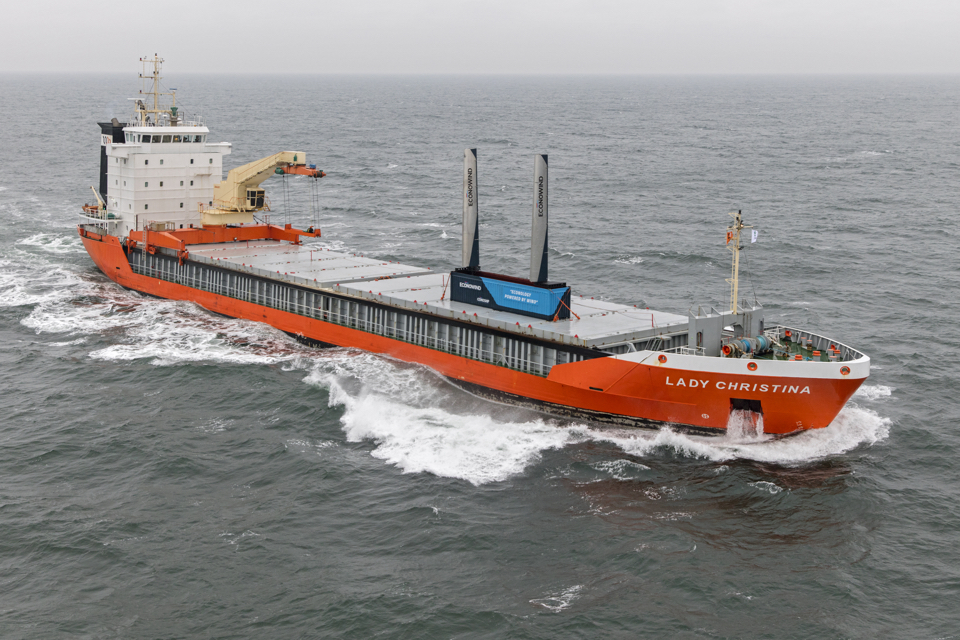With their design of a wind assisted propulsion system, the eConowind unit, the ship designers at Conoship International landed themselves the Maritime Innovation Award. The award was presented at the Maritime Awards Gala, which took place in Rijswijk, the Netherlands, last night (4 November).
Conoship International sought to use the freely available wind at sea in a simple way to save fuel and reduce emissions. The solution had to be suitable for both new and existing ships. The result is the eConowind unit designed in collaboration with Econowind BV and tested on MV Lady Christina of WijnneBarends.
 Picture by Flying Focus.
Picture by Flying Focus.
The unit is a practical auxiliary wind propulsion system for ships in the form of a forty-foot container with two folding “VentiFoils”: a ten metre high wing shaped element using modern innovations in aerodynamics creating high propelling force relative to its size. Smart suction is integrated in the wing, resulting in double the force of the Ventifoil while reefing when needed.
As with sailing, this means that wind force is immediately converted into thrust for the ship, but with approximately five times as much thrust per square metre. Several eConowind units can be installed on all types of ships just as easily and quickly as a 40-foot container. It is also possible to install larger, freestanding VentiFoils on a ship.
Ten to Twenty Per Cent Fuel Reduction
There is no need for extra crew: the VentiFoils fold up completely autonomously when the wind is favourable and optimally position themselves into the wind to provide the greatest possible thrust. At the same speed, fuel consumption and CO2 emissions can be reduced, with orders of magnitude of ten to twenty per cent depending on the vessel, number of eConowind units, sailing area and speed.
Other Nominees
Huisman Equipment was nominated for the two 10,000 tonnes offshore cranes it supplied to Heerema Marine Contractors’ crane vessel Sleipnir. These were based on completely new design principles. This has led to considerable weight savings of the cranes and means that less steel is needed for the cranes themselves, which also improves the stability of the ship.
Third nominee was Value Maritime with its “plug and play” scrubber (exhaust gas cleaning system, EGCS). It is contained in a twenty-foot transportable module. It filters both sulphur and ultrafine particulates from the exhaust gases of ships. Furthermore, the CO2 footprint is ten per cent lower than when using marine gas oil (MGO).
Picture: From left to right: Two representatives of nominee Value Maritime, one from nominee Huisman Equipment next to winner Conoship and jury president Hans Huisman.








